News - Babcock Scott
Your Guide to the Utah State Construction Registry
The Utah State Construction Registry (USCR) is an online system designed to facilitate the filing and tracking of construction-related documents. The USCR is intended to streamline communication among property owners, contractors, subcontractors, suppliers, and other stakeholders involved in construction projects in Utah. One of the main goals of the platform is to improve transparency and ensure that all parties are aware of the important notices and filings involved in construction projects.
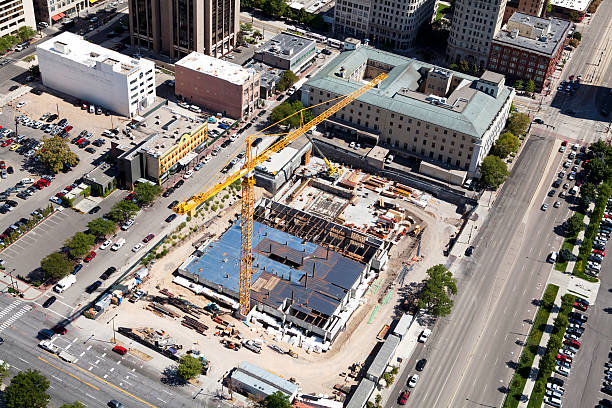
Who Can Use It?
The SCR is designed for use by:
- Property owners
- General contractors
- Subcontractors
- Material suppliers
- Lenders
- Design professionals
What Problems Does the Utah State Construction Registry Solve?
The SCR addresses several common issues in construction projects:
- Lack of transparency: Ensures all parties are informed of key project milestones and filings.
- Payment disputes: Helps track preliminary notices to prevent disputes over payments.
- Legal compliance: Ensures compliance with Utah state laws regarding construction notices and liens.
Anyone with a utah.gov login can access the registry, visit the Utah State Construction Registry website, and hit login. Or if you do not know if you have a login, you can hit get started to learn more.
Guides for Contractors and Other Users
The SCR website provides guides for contractors and other users, including step-by-step instructions on how to file various notices and liens.
What Notices Can Be Filed on the Utah State Construction Registry?
Notice of Commencement
- This notice is filed by the owner of a public project or general contractor to signify the commencement of a public construction project. A notice of commencement is only filed for public projects.
Preliminary Notice
- This notice is filed by general contractors (on private projects), subcontractors, and material suppliers, and other stakeholders to inform the property owner or and general contractor of their involvement in the project. It helps preserves protect their right to file a lien if they are not paid.
Notice of Preconstruction Services
- This notice is used by professionals providing preconstruction services, such as design and planning, to ensure they are recognized as part of the project and preserves their right to file a lien if they are not paid.
Notice of Construction Loan
- This notice is filed by lenders to inform all parties that a construction loan has been secured for the project. It helps ensure that everyone is aware of the financing involved.
Notice of Completion
- This notice is filed by the property owner or general contractor to officially declare that the construction project is complete. It marks the end of the project and establishes a deadline for parties to file a lien.
Filing a Preliminary Notice in the Utah State Construction Registry
Filing a preliminary notice is an important step to secure your right to payment. Here’s a brief summary of the process:
- Log in to the USCR: Access the USCR website and log in with your credentials.
- Enter Notice Information: Fill in the required details about your involvement in the project, including your role, the type of work or materials provided, and information regarding the person with whom you have a contract.
- Submit the Notice: Review the information for accuracy, pay the required filing fee, and submit the notice. You will receive a confirmation email once it is filed.
Filing a Construction Lien in Utah
If you have not been paid for your work or materials, you may need to file a construction lien. Here’s how to do it:
- Prepare the Lien Document: Gather all necessary information, including the project details, amount owed, and your contact information.
- Record the Lien: Record the lien with the county recorder’s office in the county where the project is located.
- Notify the Parties: Ensure that all relevant parties, including the property owner and general contractor, are notified of the lien filing.
By following these steps, you can use the SRC to ensure all parties fulfill responsibilities outlined in the initial construction contract.
Babcock Scott & Scott, P.C. Advantage:
Navigating the Utah Construction Registry platform can be complicated and you want to ensure that you are filing and submitting the correct information and forms. The attorneys at Babcock Scott & Babcock, P.C. are here to help ensure that you get paid for the hard work that you have put into a job!
Filing Construction Liens in Utah
Introduction to Construction Liens
Construction liens, often referred to as mechanic's liens, serve as a crucial legal tool for contractors, subcontractors, and suppliers to secure payment for labor, services, materials, or equipment furnished in the construction industry. These liens provide a form of security by attaching a claim to the property where the work was performed, ensuring that payment disputes can be resolved with legal backing.
A construction lien is a legal claim against a property that has been improved by the efforts of construction professionals but where the full payment for services has not been made. This claim ensures that contractors and suppliers have a way to enforce payment through seeking to foreclose on the property itself if necessary.
Importance in the Construction Industry
In the construction industry, liens are important to contractors, subcontractors, and suppliers as they protect their financial interests. They ensure that those who provide labor, materials, equipment, or services to enhance the value of a property, have an avenue to seek compensation for their contributions, even when project owners face financial difficulties.
Legal Basis and Functionality for a Construction Lien
Construction liens are based on state laws that recognize the unique nature of construction contributions to real estate. In Utah, these laws outline specific procedures and legal standards that must be met for a lien to be validly filed and enforced.
Impact of Construction Liens on Property Titles
Once recorded, a construction lien attaches to the property title, making it difficult for owners to sell or refinance without first addressing the lien. This provides leverage to lienholders seeking payment.
Rules and Processes for Filing Construction Liens
General Procedures
In Utah, like in many other states, the process of pursuing a construction lien involves the following three several key steps: (1), preserving your ability to file a lien by filing a preliminary notice, (2) perfecting your lien by recording a formal lien with the county recorder's office; and (3) enforcing your lien by filing a lawsuit to foreclose on the property.
Documentation and Contract Requirements
Documentation such as contracts, invoices, and proof of service are typically required to support the claim. These documents must be meticulously maintained to successfully file a lien.
Jurisdictional Differences
An understanding of the jurisdictional differences within state laws is crucial. In Utah, specific rules about the timing, documentation, and enforcement of liens can determine the success of a lien claim.
Preventing Construction Liens
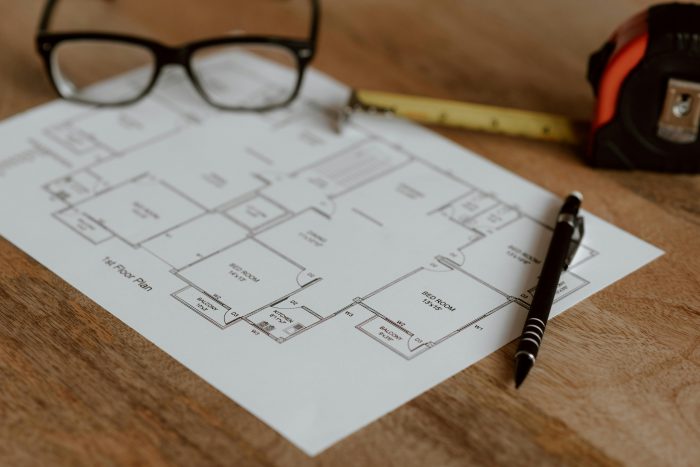
Choosing the Right Contractor
To avoid potential liens, it’s important for property owners to vet general contractors thoroughly, ensuring they have a strong track record of fulfilling contractual obligations and managing their subcontractor payments.
Similarly, it is important for general contractors to vet potential clients thoroughly, in order to mitigate any potential risk of needing to file a lien later in the project.
Contract Specifications
Clear contract terms regarding payment terms, schedules, and obligations can help in preventing misunderstandings that might lead to liens.
Payment Strategies with Joint Checks
Using joint checks can be an effective strategy to ensure that payments reach all parties involved, thereby reducing the risk of unpaid subcontractors or suppliers placing liens on the property.
Preserving a Lien Claim
Time Limits and Deadlines
In Utah, in order to preserve their ability to record a lien, contractors and suppliers must timely file a preliminary notice. Failure to timely file a preliminary notice may result in a contractor, subcontractor, or supplier from being able to pursue a lien.
Required Information for Filing
A preliminary notice must include information regarding:
- The real property where the labor, materials, equipment, or services are being furnished.
- The owner of the real property.
- The general contractor for the project.
- The party with whom the person filing the preliminary notice has a contract.
- The party filing the preliminary notice.
Process of Filing a Preliminary Notice
Contractors, subcontractors, and suppliers who want to preserve their ability to record a lien at some point in the future, if necessary, must file a preliminary notice on the SCR within 20 days after beginning their work. A preliminary notice must be filed on Utah’s State Construction Registry (SCR) database. This database is available at scr.utah.gov.
Perfecting a Lien Claim
Time Limits and Deadlines
In Utah, contractors, subcontractors, and suppliers have specific time frames within which they must perfect. typically within 90 days of last providing labor or materials.
Required Information for Filing
A recorded lien must include accurate details about the claimant, the property owner, the property itself, and the principal amount due. Accuracy is crucial to prevent the lien from being invalidated.
Process of Recording in County Recorder’s Office
The actual filing is done at the county recorder’s office where the property is located. This includes submitting all required documents and paying applicable fees.
Enforcing a Lien
Legal Process of Enforcing Perfecting a Lien
Enforcing a lien involves taking the necessary legal steps after recording a lien filing to enforce your lien ensures it is enforceable.
Timeframe for Filing a Lawsuit
If payment is not made after recording a lien, the next step is to file a lawsuit to enforce the lien. In Utah, this must be done within 180 days after recording the lien.
Possible Outcomes and Court Judgments
The outcome of such lawsuits can vary, but they may result in the forced sale of the property to satisfy the lien, or removal of the lien upon payment.
Remedies and Resolutions
Paying Off the Lien
Property owners can resolve a lien by paying the full amount claimed. This immediately releases the lien from the property title.
Legal Challenges against Liens
Property owners can dispute construction liens through legal challenges that question the validity of the lien or the accuracy of the amounts claimed. These challenges often involve proving that payments were made, services or materials were not provided as contracted, or that procedural mistakes were made during the lien filing.
Consulting Construction Attorneys for Guidance
Navigating the complexities of construction lien laws can be daunting, which is why consulting with experienced construction attorneys is essential. These professionals can provide strategic advice, help in proper documentation and procedure adherence, and represent parties in disputes or negotiations related to liens.
Babcock Scott Advantage:
Working through filing a construction lien in Utah can be complicated. The attorneys at Babcock Scott and Babcock are here to help ensure that you and your crew get paid for the hard work that you have put into a job!
Navigating Cost Overruns in Construction: Legal Insights and Strategies
Understanding Cost Overruns
In the construction industry, cost overruns are a common yet challenging issue. These unexpected expenses can significantly impact the financial stability and overall success of a project. Understanding the legal aspects of cost overruns is crucial for construction professionals to manage and mitigate these risks effectively. This article explores the legal landscape surrounding construction cost overruns, providing valuable insights and strategies for navigating these complex issues.
Cost overruns occur when the actual costs of a construction project exceed the original budget. These overruns can stem from a variety of sources, such as unpredictable weather, regulatory changes, or inefficiencies in project management. While there are many causes for cost overruns, here are three of the primary causes of cost overruns in construction:
- Material Price Fluctuations: The cost of construction materials can be highly volatile, influenced by global supply chain issues, changes in tariffs, or natural disasters. Such fluctuations can significantly impact the overall budget of a construction project.
- Labor Shortages: The construction industry often faces challenges in finding skilled labor, which can lead to delays and increased wages due to high demand. This scarcity of skilled workers can escalate project costs unexpectedly.
- Design Changes: Modifications to the design or scope of the project during construction can lead to increased costs. These changes often require additional materials and labor, and can extend the timeline of the project, further increasing expenses.
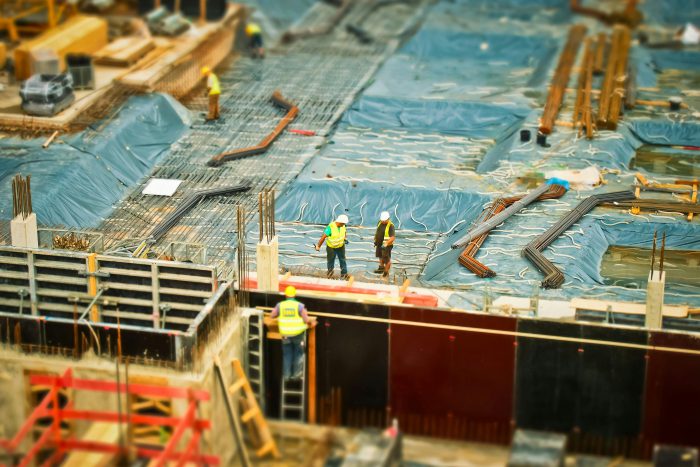
Best Practices to Avoid Cost Overruns as a Construction Project Manager
Effective management of cost overruns begins with robust budgeting and accurate cost estimation. Incorporating contingencies for unexpected expenses, thorough project planning, and stringent risk management can preempt many issues. Additionally, maintaining clear communication and detailed documentation throughout the construction process helps ensure that all parties are aligned and informed, reducing the likelihood of disputes.
Navigating Legal Disputes over Cost Overruns
When disputes over cost overruns arise, there are many tactics you and your legal team can take including negotiation, mediation, arbitration, or litigation. Each method offers different advantages and should be chosen based on the specifics of the situation. Successful case studies demonstrate that early intervention and professional mediation can prevent minor disagreements from escalating into more significant legal battles.
The legal framework for handling cost overruns revolves around contractual provisions. These provisions determine how additional costs are managed and who is responsible for absorbing them. So the best way to minimize these types of disputes is to ensure that provisions are in place before engaging with contractors.
Of course, there are always unforeseeable circumstances that come up in any construction project. For these situations, change orders are a critical component, allowing project specifications to be altered legally and the associated costs to be addressed.
Pro Tip: Clarifying the responsibilities of all parties involved through executing clear, comprehensive contracts are vital in minimizing disputes over cost overruns.
The Role of Legal Professionals in Managing Cost Overruns
Construction law firms play a crucial role in managing cost overruns by assisting with contract drafting, negotiation, and enforcement. Legal professionals also provide essential support in dispute resolution and claim management, ensuring that all actions comply with relevant regulations and minimize financial risks. Legal advice is incredibly important in navigating the complex landscape of construction cost disputes, and with the help of a qualified construction law legal team, many times you will be able to recover unexpected costs that occur with cost overruns.
Cost overruns in construction require careful management and a deep understanding of the legal context of the original contracts. By employing the strategies discussed and engaging with legal professionals, construction managers and firms can mitigate these risks and maintain project viability.
If you're facing challenges with construction project management or cost overrun disputes, don't hesitate to contact the experts at Babcock Scott and Babcock. Our team of experienced construction law professionals is ready to assist you with effective legal solutions tailored to your project's needs.

Legal Tools for Getting Paid in Wyoming
Jason H. Robinson will be presenting for the National Association of Credit Management on August 30, 2020, from 3:00 to 4:00 pm EDT / 1:00 to 2:00 pm MDT. The title of his presentation is "Legal Tools for Getting Paid in Wyoming." Information about his presentation as well a link to sign up is available here.

Navigating your Construction Project through COVID-19
The relaxation of COVID-19 restrictions and reopening of the economy has become a delicate balance. As the return to everyday activity progresses, it is important to prepare in advance for this “return to normalcy,” which will almost certainly come in stages, especially as it relates to construction activity. As it happens, there will be numerous considerations depending on the stage of your project in the construction lifecycle, the status of the project stakeholders, and the implementation of revised or new safety requirements.
Productivity Impacts
Projects that have been allowed to continue operations during COVID-19 restrictions should not expect normal work activity to be achieved as the stay-at-home restrictions are relaxed. Current social distancing and personal hygiene requirements will likely remain in place and continue to impact site access and worker productivity until a vaccine is developed or the severity of the virus wanes.
Careful consideration of social distancing and personal hygiene requirements should be applied to projects resuming operations following a shutdown as well as those starting from day one. The construction industry’s emergence from COVID-19 will be a slow, methodical process that will result in reduced productivity levels. Losses in productive time will come in many forms.
For projects that were suspended or restricted, a reforecasting of costs will be in order as many contractual Notice provisions require an estimated cost of the anticipated impacts to be provided to Owners. For new project starts, the same steps will be needed to justify changes in bid price.
Projects that have been shut down or slowed will need to account for demobilization and remobilization impacts. The pre-shutdown conditions and worker productivity must be thoroughly documented and communicated to all project stakeholders. This baseline condition will be critical to establishing the additional effort expended to remobilize and resume operations on site.
Schedule Impacts
On projects that have been shuttered, scheduling impacts will need to be addressed before work can resume and some of those steps may be significant.
Validation of your project schedule will be necessary regardless of what stage your project was in when it was shuttered or otherwise impacted by COVID-19 restrictions. Some projects will require a recovery schedule to make up for delays and account for changes resulting from COVID-19. This schedule should memorialize the schedule scenario that was in effect before the project was impacted by the virus and it should clearly show what changes were made to recover from any resultant delays.
Notice of COVID-19 impacts submitted earlier should be amended to reflect current conditions, and the amended notices should accompany submissions of recovery schedules in order to: (1) strengthen contractors’ arguments for relief, and (2) allow the owner to evaluate the financial implications of following the recovery schedule. Regardless of whether a recovery schedule is submitted and/or accepted, regular monthly schedule updates should be prepared and submitted to document progress as well as any additional COVID-19 related impacts that may arise.
Supply Chain Impacts
Procurement is another serious consideration because, although construction may be allowed to resume in your area, there may be supply chain impacts.
Contractors should consult with their subcontractors and suppliers when they resume work. Overlooking these parties can give rise to unnecessary delays and claims. Clear communication on changes to the project and collaboration on recovery actions are some steps that can be taken to involve subcontractors and suppliers.
Conclusion
We will emerge from COVID-19, but it will take a concerted effort by all of us. It will be no different for the construction industry. Taking time now to consider and address impacts will set the stage for successful recovery that will benefit all stakeholders.

Bad Faith Termination for Convenience
Many construction contracts include a clause that allows an owner to terminate a contractor’s remaining work on a project at the owner’s convenience. And during a global pandemic and these turbulent economic times, termination for convenience clauses are receiving renewed attention, including under what circumstances an owner may not terminate for convenience.
At the outset, some courts have at times viewed termination for convenience clauses suspiciously because such clauses typically confer an unfettered right to terminate only upon the owner. To some courts, this lack of mutuality appears to constitute an “illusory promise” lacking consideration, and thus, a provision some courts may not enforce. To remedy this issue, some courts have required an owner to have good faith reasons when exercising the termination for convenience clause. If an owner acts in bad faith when terminating for convenience, the owner will have violated the implied duty of good faith and fair dealing. See generally 5 Bruner & O’Connor Construction Law § 18:47.
But when does an owner act in bad faith when terminating for convenience? Few Utah courts have analyzed termination for convenience clauses, let alone explained the limitations on exercising such provisions.
Beyond Utah, other courts have held that a party acts in bad faith when it terminates a contract for convenience simply to acquire a better bargain from another source. See, e.g., Krygoski Constr. Co. v. United States, 94 F.3d 1537, 1541 (Fed. Cl. 1996).
Although few Utah courts have explored the limitations on termination for convenience clauses, precedent from federal appellate courts indicate that an owner acts in bad faith when it terminates for convenience simply because the owner got a better deal. To avoid potential allegations of bad faith, an owner may want to confer with counsel before deciding to exercise its termination for convenience rights simply because the owner found a better bargain elsewhere.
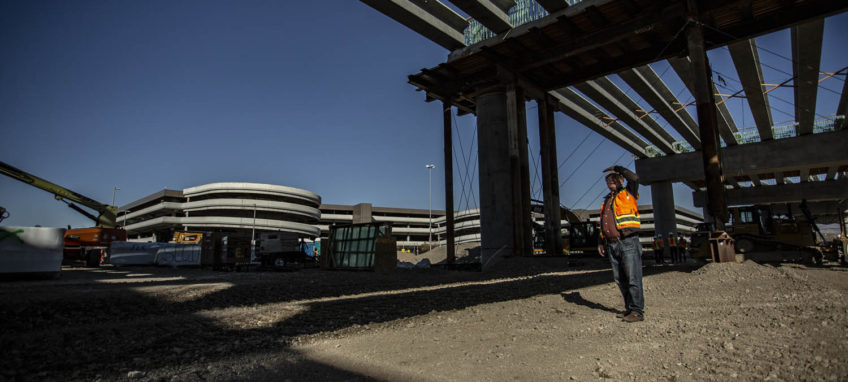
How Will Today’s Pandemic Impact Tomorrow’s Construction Contracts?
The emergence of COVID-19 has created a new set of challenges in the already complex world of negotiating construction contracts. In the pre-COVID-19 era, general contractors, construction managers and those negotiating on their behalf, needed to balance a variety of fairly well-established legal risks and exposures and commercial realities with the need to maintain a positive relationship with their counterparty. While many are rightfully concerned with addressing the impacts of COVID-19 to their on-going projects, those negotiating new contracts now are undoubtedly cognizant that they are negotiating in the midst of an unpredictable future that is tipping the historical negotiating balance. The following presents some crucial areas to focus on when negotiating and drafting your contracts in this new era.
Contract Terms Impacted by COVID-19
Contractors should examine proposed new contracts carefully to identify rights that afford COVID-19 protections and identify contractual obligations that create COVID-19 commercial risks.
Specific attention should be paid to those sections relating to force majeure/excusable delay, emergencies, changes (including changes in law), contingency, suspension and termination, site investigation as well as all representations and warranties. The paramount concern in examining these provisions is to ensure that they not only entitle the contractor to relief for those unknown events, emergencies and changes, but that they also contain sufficient entitlement for the contractor to obtain both time extensions and financial compensation for unknown impacts of a known event – the COVID-19 pandemic.
Price and Schedule
Construction contracts often entitle the contractor to extensions of time for excusable delays, but not an equitable adjustment of the contract price.[1] Contractors should look to adjust excusable delay provisions or include new specific language to provide for entitlement to additional time and compensation associated with COVID-19 impacts. If compensation terms cannot be negotiated into the contract, this risk will need to be priced, which, as discussed above, may be a difficult task.
Contractors need to take appropriate steps to ensure that their contracts are clear, and to the largest extent possible, cover impacts flowing-out of the present pandemic and any future resurgences of COVID-19 or similar outbreaks.
Contractors may consider categorizing COVID-19 related impacts into two buckets – the known and the unknown and factoring those presently known impacts of COVID-19 into their price and schedule. For example, such known items may include social distancing requirements, workforce limitations, temperature screening, personal protection equipment, as well as performance delays and costs that arise out of the cumulative impact of these new measures. Next, the contractor needs a mechanism to obtain price and schedule relief for the presently unknown impacts of COVID-19.
Contractor Representations
In many construction contracts, the contractor provides broad and unqualified representations that it will be able to furnish the materials and labor required to the complete the work, often within the defined contract time. This can be a difficult representation to make in the current market and should be appropriately qualified to consider the uncertainty that exists in current labor markets and the potential for supply chain disruptions that are outside the contractor’s control. Additionally, ensuring that the contract provides for entitlement to equitable adjustments of time and contract price for COVID-19 related impacts will assist with mitigating this risk.
Indemnities and Waivers of Consequential Damages
No discussion of construction contracts would be complete without a nod to indemnities and waivers of consequential damages. Indemnity issues affected by risks related to COVID-19 should be treated with special consideration. As coverage and policies varies from company-to-company and at times from project to project for the same company, contractors should consult with legal and insurance professionals to assess these provisions.
Consequential damages waivers are always critical protections for contractors; and should now be tailored to ensure they address COVID-19 related risks. A failure to secure an effective consequential damages waiver creates significant exposure on any construction project, exposure that is made exponentially greater by the long list of potential damages that may arise from COVID-19.
Conclusion
As this pandemic continues to impact the construction industry, we expect new strategies to be developed as contractors and owners work together to address and apportion the risks of tomorrow’s construction projects. As part of that effort, contractors will be best served to bear in mind potential impacts to cost and schedule, the scope of their representations and obligations, and ensuring that all such clauses throughout the contract are properly harmonized.
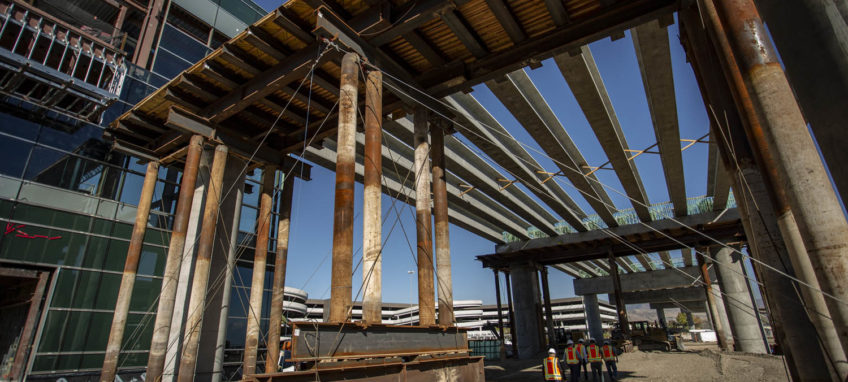
COVID-19 Impacts on Construction
COVID-19's impact on construction projects and parties have been
varied. Some owners have been forced to defer capital projects, adjust project completion expectations or shut down construction sites altogether. Owners of other ongoing construction projects have been largely unaffected due to the nature of their construction project or the regulations at their location.
Whether a project is significantly impacted or largely unaffected, parties to a construction project should review their contracts for guidance on how to address the impacts associated with COVID-19. Certain contractual provisions regarding delay, disruption, changes, damages and force majeure may be relevant.
Ideally, documentation of the project status has been created on a regular
basis, including at the outset of the impacting event. Impacts should be tracked and recorded in as much detail as possible, including steps taken to mitigate the associated delay or cost increases. This can be done through project schedules, daily logs, weekly COVID-19-specific reports, photographs or other means. Whatever the means of documentation, it will likely be helpful in a dispute situation to have supporting records with as much detail and specificity as possible.
We're challenging clients to do more than simply create a list of possible impacts. Circulate the list among the entire project team, and document as much as possible in the schedule or separate tracking log. Tie impacts to specific schedule activities or items in the job cost report so that there's a good record established linking impacts to delays or cost growth.
Communication and documentation are critical to managing issues related to COVID-19. Schedule impact and cost overrun information should be sought from subcontractors, suppliers, owners and other project stakeholders. It takes a collaborative effort to get as much quality information as possible.

Documentation: A Key to Preventing and Winning Construction Claims
Both practically and legally, a picture is worth a thousand words. In both the construction and legal industries, attempting to resolve issues based on oral conversations can be a recipe for further conflict. This is because it is inherently difficult to determine the truth in a “he said, she said” situation.
A judge, jury, or owner will need to determine who seems most trustworthy. Therefore, in preventing and prevailing on construction claims, it is essential that contractors create and retain the proper documentation.
One of the most important aspects of documentation is that it is kept on a consistent and contemporaneous basis. To properly utilize construction documentation, it must be kept as a general business practice at the time an event occurs.
One of the most important construction documents is the daily log. While a poorly kept daily log may be a waste of time, a properly kept daily log can be the key to avoiding liability. To do it right, a company should document the who, what, when, where, and why of the day. By recording these items, the contractor is preserving a reliable source of information.
A dispute over payment is common in construction litigation. One of the best ways to resolve or prevent such disputes is to properly record and keep invoices and pay applications. Proper record keeping maintains the trust relationship. Although it is tempting to hide cost overruns in different items within a schedule of values, such practices can and do result in a loss of the owner’s trust and can push a project into litigation.
To resolve a dispute over delays, contractors need to be keeping and updating proper schedules.
Even if a contractor starts out with a true CPM schedule, failure to preserve the baseline schedule and periodic updates as separate files negates any benefit there would have been.
Photographs and video records provide excellent evidence. No matter the type of claim, photographs and videos provide concrete proof of the status of the job at the time the photograph or video was taken.
When it comes to change orders, the Supreme Court of Utah has required strict conformance to contractual written notice requirements. See Meadow Valley Contractors, Inc. v. UDOT, 2011 UT 35. A good practice is to follow up conversations with an email summarizing the conversation. This gives you the ability to frame the conversation how you would like, and the recipient still has the ability to correct it if necessary.
Lastly, a contractor should not over document a job. Such notices hold little weight, and impacts the credibility of the party who is guilty of over documentation. A contractor should be cautious when making broad assertions of damages or default without specifics, and should limit such notices to when an actual default is affecting the project.
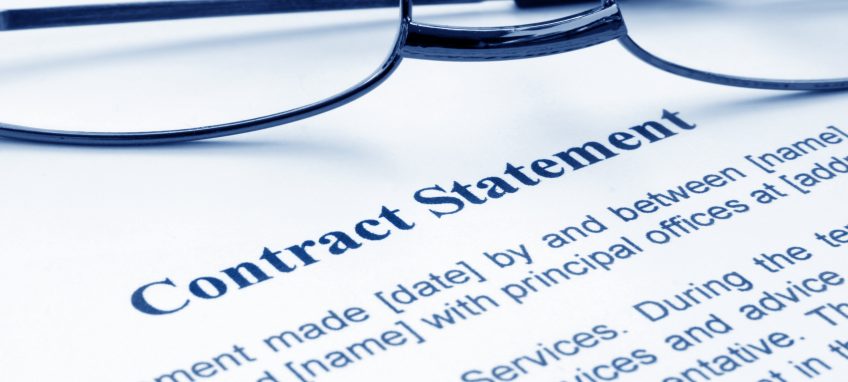
Pay When Paid Clauses: What Constitutes a Reasonable Time?
In Utah, it is uncertain whether the construction contract contingency payment language is enforceable.
There is a difference between "pay when paid" clauses and "pay if paid" clauses. Pay if paid clauses have been unenforceable for some time in many states. There is no decision from Utah Courts dealing with the enforceability of pay if paid clauses.
However, the majority rule throughout the country provides that if a clause is a pay when paid clause, it is enforceable, but only for a reasonable time. A "reasonable time" is determined according to the relevant circumstances, but in no event shall be less than the time the contractor and subcontractor require to pursue the final conclusion of their legal remedies allowed by law.
What is the take away on the unenforceability of pay when paid clauses? It is likely that a pay when paid clause will be unenforceable when it impermissibly affects or impairs rights of the parties to a construction contract because the duration for payment extends "too long." However, what is "too long" is not defined in the contract, and neither can be found in the contract terms. The reality is that a "reasonable time"” must be something short of the time that the contractor and subcontractor are required to pursue to conclusion their legal remedies against all parties to the construction contract.
General contractors may want to review and revise their contingency payment clauses found in their subcontracts or master contracts. Also, general contractors and subcontractors may want to review their pay when paid contract clauses for enforceability; and, in going forward, specifically provide for a “reasonable duration” for pay when paid clauses on all future contracts.



